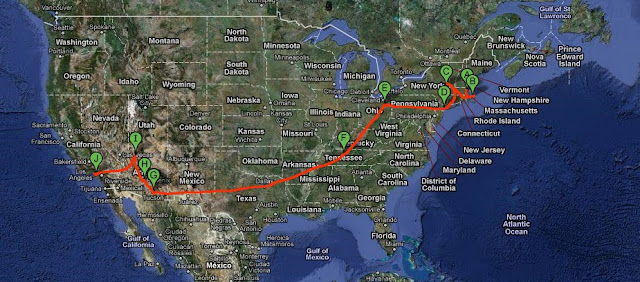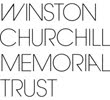A half an hour walk across a peaceful, sunny and resurgent Harlem, through Marcus Garvey Park, took me to East 121st, a small street with three large and prominent buildings standing out from the construction sites and apartment blocks.
All three belong to Odyssey House, a big social welfare organisation started in New York that deals with homelessness, addiction and other mental health issues in infant, adolescent, adult and elder populations in a total of 10 different locations around the city. The website tells the story:
‘‘Since 1967, Odyssey House has provided innovative services and programs to a broad population of individuals and families struggling with substance abuse and mental health disorders. It was founded by Dr Judianne Densen Gerber, a resident psychiatrist working at Metropolitan Hospital in New York City who was dissatisfied with the practice of using drug replacement medications such as methadone as the primary therapeutic intervention.
Adopting a non-traditional treatment approach, she partnered with her patients to form a drug-free Therapeutic Community (TC). The first Odyssey House program was located in East Harlem on 109th Street and provided treatment for 17 ex-addicts; it quickly grew into one of the country’s preeminent therapeutic communities – catching the attention of public policy and medical experts.’’
I was here to visit the ‘Elders Program’, a response to an increasingly elderly population (55 and over) who have problems with drink and drugs. I had anticipated finding a self-contained unit with an exclusively aged population. What I found was quite different.
Stepping through the big glass doors into the waiting room, I was immediately hit by the hustle and bustle of the place. An elderly man sat behind a desk issuing passes to residents who had permission to go out; women with children were waiting for admission, and others were congregating to go out with escorts to access medical and judicial services. The receptionist was holding a phone and having two other conversations. It was busy.
In Lydia Woodman’s Administration office I was laughingly disabused of my notions of a quiet retreat type therapeutic environment for senior citizens. ‘We have 273 adults, seniors and children on the roll today,’ she told me and went on to explain the lay out, structure, population and purpose of the building.
The 6th (top) and 5th floors house adult males (18-54 years old) who have been referred to Odyssey House by courts, social workers, families or themselves, to deal primarily with drink and drug dependence. They are housed in dormitories, 6-8 in a room, with a locker and a pinboard each being their only exclusive property. They can expect to stay between 12 and 18 months in this spartan (to me) environment so long as they fulfill their contractual obligations to Odyssey to not drink or drug, attend AA/NA fellowship meetings and attend the daily programme of relapse prevention, life skills, anger management, education and therapy groups. After approximately 12 months residents are expected and required to find work to prepare them for a move into independent or supported living.
The 4th floor is home to the ElderCare Program where up to 70 residents are housed, four to a room in beds which look as though a seargent major or Nurse Ratched had supervised their making! The need for such a facility is explained on the website that claims:
‘‘Odyssey House’s ElderCare program focuses on the special needs of older populations whose numbers are increasing by as much as 20 per cent each year. As baby boomers, many of whom experimented with drugs in the 1960s and 1970s, head towards late middle age and their senior years, the number of older Americans with substance use disorders is growing dramatically. The federal Substance Abuse and Mental Health Services Administration estimates that 1.7 million Americans over the age of 50 are addicted and predict this population will to grow to 4.4 million by 2020.’’
I wonder whether there's a message here for the UK?
On the 3rd floor the adult women (18-54) are housed, and perhaps most suprisingly, and both sadly and encouragingly, the 2nd floor is home to pregnant women and parents of children five years of age and younger residing together in parent/child units for 12 to 24 months. ‘Mothers and fathers do no longer need to choose between caring for their children and seeking treatment,’ Lydia explained.
The ground floor is comprised of dining rooms, day rooms, offices and three nurseries which, when I visited, had perhaps 20 under-fives sleeping soundly on mattresses. That was until the fire alarm sounded and I found myself having to pick up a deeply sleeping girl and carry her towards the exit and the street. She woke just in time to hear the call through the corridors: ‘False Alarm’.
Managing and controlling a therapeutic community on this scale requires a huge number of staff and volunteers from both former and current residents, and they have a wide range of sanctions in the form of ‘contracts’ to encourage and ensure appropriate behaviour and attitudes. There is no smoking allowed in the building at all, and unless a resident has a medical or court appointment, he/she does not go out for the first 105 days! After that a ‘pass’ is issued under strict conditions, which if not complied with, is withdrawn. A woman washing dishes in the kitchen was pointed out to me as being on a contract that required her to wash all the dishes for a week. She had broken the No Smoking regulation.
While talking with one of the three resident social workers, a twinkly-eyed Puerto Rican elder stopped to chat with us. The social worker looked at him and immediately asked if he had taken any ‘Roxy’. The denial was immediate and disbelieved and he was told that he would be urine sampled later in the day. I asked what would happen to him if he tested positive and was told OH staff would work with him but that he would go back to spending 105 days without a pass. (Roxy, like Hillbilly Heroin, is slang for Oxycodone aka Oxycontin, an opiate analgesic that is hugely popular and available mostly via private prescription in the USA – and elsewhere – at the moment.)
This is a long post that hardly touches on the extent of the work that is being done by Odyssey House and their website lists an impresive variety of services to various populations. The model has been successful enough over 40 years to have been taken up in Utah, Louisiana, Michigan, Texas, New Zealand and Australia. Interestingly, they have not made it to the UK.
As I walked back across Harlem reflecting on my hectic four hours, there was both sadness in my heart at the chaos and misery of some human existence, and optimism that the energy of recovery and spirit of hope could exist side by side in extraordinary Odyssey House.




No comments:
Post a Comment